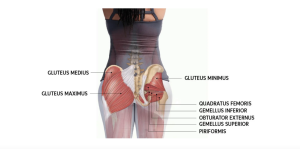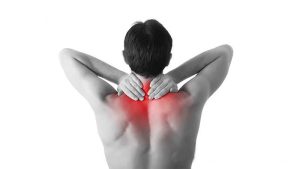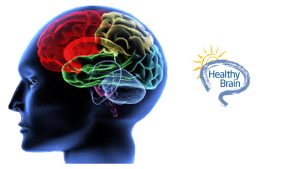Your core muscles are the most important muscle group in your body. A strong core helps support your spine and promotes good posture. The muscular system relates to both local and global muscle groups. Local muscles, being our core, are the deep stabilizers and global muscles are the larger, superficial muscles that generate movement. Every move you make originates in your core. These muscles are vital to many common movements, such as lifting, twisting, reaching, and bending. Normal, everyday life requires almost constant use of the core muscles.
It is important to strengthen both muscle groups to avoid muscle imbalances. Developing strong abdominal muscles help prevent back pain by making you less prone to back injuries, having proper spinal alignment and better bladder control.
What are the core Muscles:

Five muscles make up your deep core. They are the transverse abdominis, multifidus, internal obliques, pelvic floor and diaphragm. They lie below your abdominals and wrap around your midsection connecting to your spine. The muscles occupy areas in your lower back, hips, glutes, trunk, and stomach and work together to stabilise your lower back.
Your abdominals are the front anchor of your spine. When they are not strong enough the other structures supporting your spine (e.g. your back muscles) will have to work harder. The muscles of the abdomen and lower back combine to hold your spine and pelvis in place. If these muscles are weak, your body will be unstable, and you won’t be able to sit or stand erectly for more than a short period. Instead you will slouch or slump, which in turn will strain your muscles.
Your core muscles stabilize your entire body. Muscular weakness in any part of the body can be a sign of an inadequate core. The core generates power and stability for most of all body movements e.g. throwing, kicking and punching and also your ability to balance. A weak core will affect virtually everything you do.
Back Pain
Many people suffer from back pain and weak abdominals may be the cause of it. The lower back is one of the most common sources for recurrent pain. When your core isn’t as strong or balanced as it should be, the curvature of your lumbar spine can change. Even the slightest difference can place undue pressure on the vertebrae, discs or articulate facets that make up your spine, as well as the muscles, tendons and ligaments that surround it, making you much more prone to injury. If you do not have a more serious back condition, any lower back pain is likely a result of core weakness.
Therefore it is essential for the local muscles to be targeted and trained in order to avoid an imbalance in muscle recruitment. These muscles need to be activated first and taught motor control. It is important to know how to appropriately activate the core muscles before you begin a program to improve strength and stability.
Core Activation
Your deep abdominal muscles (local muscles) work to assist spinal and pelvic control. They run from the front of your abdomen, around your waist and insert via connective tissue into your spine. These deep stability core muscles include the transverse abdominals, multifidus, diaphragm, pelvic floor, and many other deeper muscles.
By developing stronger core muscles, you will be less likely to injure or strain your back muscles. The challenge for people with a weak deep core is learning to activate those five muscles without using their abdominals. The good news is that you can learn to activate and strengthen your deep core.
When activating the deeper muscles, it should feel like a gentle tension under your fingers. The best way to feel your deeper muscles is by wrapping your thumbs and forefingers around your waist. Your fingers will rest directly above your core abdominal muscles, just inside your pelvic bones. You can do this whilst lying down with knees bent, or sitting on a chair or stability ball.
How to activate your Core Muscles
Good posture is essential for core activation. If your posture is slumped you won’t be able to activate the core abdominal muscles properly. Make sure you sit straight with your chest lifted, spine tall and have a small inward curve in your low back before beginning activation exercises.
Gently draw in your lower abdominal wall towards your spine – it’s a slow and controlled activation. Try to slightly draw in the area where your fingers are resting. Remember this is a very subtle and gentle contraction; it should not be too strong or forceful. Try to breathe normally and start with up to 10 second deep abdominal muscle holds. Progress the duration of your holds as your core control improves with practice.
Try to avoid these common mistakes during core activation training.
- Slumped posture
- Over bracing all abdominal muscles
- Breath holding
- Doing intense exercises for the core before understanding correct activation
- Performing intense core exercises with pelvic floor problems
Once you have achieved activation for the deeper muscles correctly, it is safe to start core-strengthening and stabilization exercises. The best place to go is a pilates class to ensure you are working under supervision with instructors who specialise in this area.
Chiro & Sport Med
Our chiropractors at Chiro & Sports Med are committed to providing chiropractic solutions to address your unique needs, whether you are experiencing an irritated nerve, bulging disc, back pain, neck pain, knee pain, headaches, or even muscular tightness and tension. You may be searching for pain relief after an accident or experiencing an injury. Our mission is to help reduce or eliminate pain and to prevent future problems and injury. Above all, we are here to improve your quality of life, well-being, and your ability to live an active healthy lifestyle.
If you would like to make an appointment with one of the chiropractors at Chiro & Sports Med simply call our office on 9817 2005 and one of our friendly staff will organise an appointment for you.





